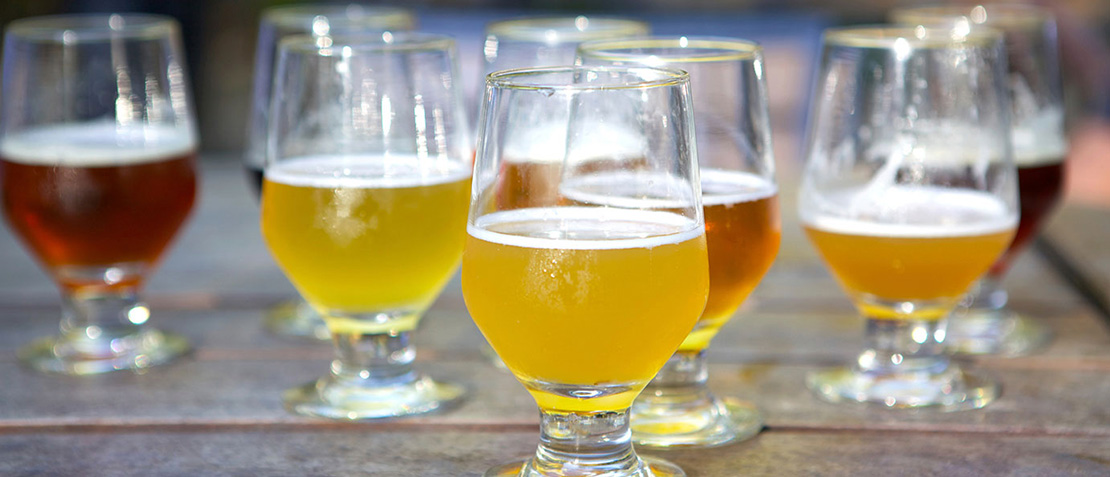December 14, 2016
We Minnesotans like our beer. Specifically, we like our craft beer. Our local craft beer. The Beer Dabbler at the annual Winter Carnival is now the largest craft beer festival in the Midwest, and Surly Darkness Day has become a sort of dark holiday for self-proclaimed craft beer nerds looking to score something new and brag worthy for their collection.
There are now over 100 craft breweries in Minnesota, 70 of which were opened during or after 2011 alone. It’s starting to feel like breweries could rival Starbucks in New York City corner for corner.
But amidst the barley-soaked euphoria of this craft beer Renaissance, some people have begun to question: are we at a tipping point?
The Growing Bubble
Craft brewers now represent over 12% of the overall beer industry’s market share, up from less than 4% in the recent past. Those numbers might seem like small potatoes, but in the grand scheme of things it’s huge. One out of every 10 beers drank nationally is now a craft brew.
According to the Brewers Association, the nation’s largest craft brew trade organization, breweries opened across the nation at a pace of roughly two per day in 2015 as more and more home brewers decided to give running a brewery a try.
In 2016, however, there was a slowdown in growth. Not in brewery openings but in sales figures—an indication that the market may be getting oversaturated as new offerings grapple for space on tap lines and store shelves. It’s important to note that these sales figures don’t include in-house sales at taprooms, which account for a big chunk of change themselves and are the sole way some breweries sell their product. Even with tap rooms in the equation though, exponential growth can’t go on forever—any armchair economist could tell you that. A slowdown is to be expected.
While we’ve witnessed the creation of many great beers in this surge of openings, there have also been a number that are … less than great. The Brewer’s Association itself cited concerns with the quality of some of the beer being created lately, despite setting a lofty goal of nabbing 20% of the industry market share by 2020.
We’ve Awakened the Sleeping Giants
Craft beer has been gradually nibbling away at domestic beer sales, and Budweiser (AB InBev) and Miller (SABMiller) have taken notice. When an industry giant like Budweiser feels the need to aggressively go after craft breweries in their Super Bowl commercials for 2015 and 2016, it’s safe to say they’ve felt the effect of craft beer on their profit margin—and they don’t like it.
AB InBev’s purchase of SABMiller could make things even uglier as the proverbial big dogs team up to pick on the little dogs by fighting to take up more real estate on store shelves, pursue aggressive advertising in an attempt to win back lost market share, and buy up craft breweries to dip into the market themselves.
Is History Destined to Repeat Itself?
Craft beer already experienced a boom and bust situation during “The Shakeout” of the 90s. The early pioneers of craft beer, who began in the 70s and 80s, found themselves suddenly surrounded by others who wanted to get in on the action but didn’t all produce the same high quality product (sound familiar?).
Consumers, unfamiliar with craft beer and already wary of trying these new “microbrews,” were easily turned off from the industry by one bad experience, affecting everyone’s sales. Combine that with the surge of imports entering the market at that time, and craft beer was in major trouble.
Breweries started shuttering their doors, and when the dust settled there were just a few strongholds left. Breweries like Anchor Steam (CA), Summit (MN), Sam Adams (MA), and Boulder Beer (CO) survived The Shakeout thanks to consistent, quality product—Summit was one of the first craft breweries to have its own lab for QA—and are still going strong today.
The End is Not Nigh!
Before we all start filling emergency bunkers with our favorite brews, let’s take a calming breath. The craft beer market is far more established than it was in its shaky, uncertain beginnings, and it isn’t going anywhere. Consumers are savvy and actively seek out craft brews, constantly eager to try something new and loyally supporting their favorites.
We will likely see some breweries close or merge together, but there will still be plentiful amber waves (and blonde, nut brown, and black) to go around. Take Colorado, for example. At the end of 2015, there were 284 craft breweries in Colorado and 7.3 breweries per 100,000 adults aged 21 and over. Minnesota, however, had 105 craft breweries at the end of 2015, or 2.7 breweries per 100,000 adults aged 21 and over. This suggests there’s still room for new craft breweries in Minnesota. While it may become more difficult to grow through distribution, with the margins on tap room sales, breweries can survive and even thrive without heavy distribution if they’re running a good business with good product.
A Word to the Wise
If you’re thinking about starting your own brewery, it’s not ill-advised, but there are a few important things to keep in mind:
- Know the market you’re walking into.
- Start with a solid product.
- Invest in quality control and assurance.
- Have the right representation.
As a self-proclaimed “beer guru” recently told us, “You can’t just be ‘new’ or ‘local’ anymore—you have to deliver the goods. Bottom line, it’s about quality.”
